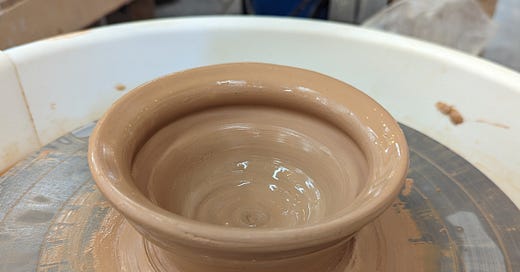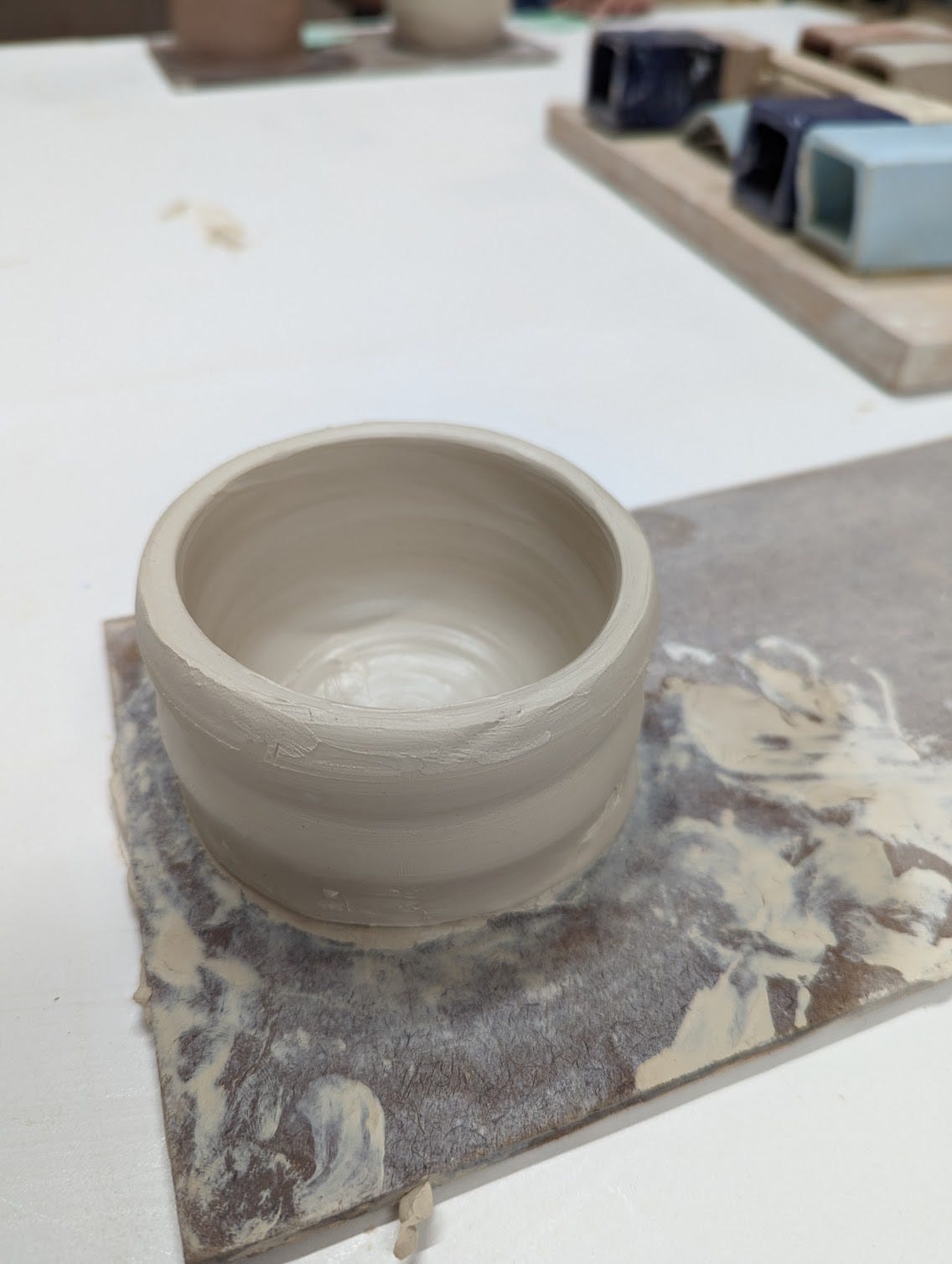I was never especially crafty, even as a kid. I loved to draw, but whenever we did crafting exercises in school my handiwork usually came out sloppy. I didn’t have any patience for the details: to measure first, to match edges, to cut along the line, to double-check and plan ahead. Some of my classmates followed instructions and produced immaculate work; mine always looked hasty and not-quite-right. I don’t say this to highlight an adorably quirky, non-conformist nature; “poor attention to detail” always came up on my report cards and I used to worry that I’d never be able to get it together enough to do any kind of professional work. Studying the piano is also a detail-oriented activity that I was pretty sloppy at, and I more-or-less remain so.
As an adult, perhaps in reaction, I wasn’t interested in taking up any kind of handicraft. Part of the problem: what do you do with the things you make? No one needs very many knitted scarves or beaded bracelets. The stuff you make will likely look jankier and uglier than similar things you can buy from the store. You could always open an Etsy shop, but thousands of other people of higher skill are offering the same things as you, not to mention the Alibaba resellers. And throwing out your work seems not only like a waste but self-injury. Better, I thought, to skip the whole thing, and stick to things that are either consumable (baked goods) or ephemeral (music).
Still, crafting runs in my family. My maternal grandmother was a potter, and her husband, my grandfather, had a business building and selling kilns. They made their living that way, enough to buy a house near the ocean: her selling her work at craft fairs in British Columbia, him selling kilns to the other potters.
While visiting San Francisco on a work trip a little while ago, there was a team-building event in a pottery studio. The ratio of instructor demoing to hands-on practice was low, which was nice. The center-open-pull-shape sequence to throw clay on the wheel can be completed in only two or three minutes, and doing it properly is all about going by feel. The motions were so smooth and elegant that it felt almost blissful. I already keep my fingernails very short for piano reasons, so that wasn’t a problem. And the recommendation to be fast, not fussy, fit perfectly with my bad-at-details attitude to crafts.
At first, I was terrible at it, as all beginners must be. I didn’t know how to keep my hands steady. I pulled the rim out past the base too early, making it unstable. And, worst of all, I kept trying to correct my mistakes by futzing with it: pulling, stretching, collaring, compressing until the whole thing inevitably fell apart. The instructor told me not to try to fix it if it came out asymmetrical — symmetry is mostly determined in the first ninety seconds on the wheel, and it’s better to start over with a new piece than try to correct one that wasn’t thrown right at the beginning.
At the end of the team-building event I’d made only an ugly little misshapen jar, but I enjoyed the experience so much that I wanted to try again. I signed up for a six-week class at a studio in Seattle, and continued to be terrible for the next several weeks. The impulse to futz was difficult to resist, and I made a lot of things that had maybe ten seconds of life as almost-okay bowls before my interference destroyed them. At the last class, the instructor (kindly, but to my humiliation) asked if I wanted to borrow some of his castoff pieces to learn trimming and handles since I didn’t have any completed work of my own to practice on. Finally I took advantage of the free studio hours and went in a few evenings ago, determined to produce as many pieces as possible, no matter how ugly they turned out. And, of course, my work started to improve almost right away. Time flew by in a state of zen. I threw five vessels that evening, and the fifth was noticeably of much higher quality than the first.
Of course, now I have the too-much-pottery problem. It doesn’t all fit on my studio board anymore and I will probably have to throw some out. My grandmother also had the too-much-pottery problem, and eventually, for her craft fair work, she switched to selling hand-dyed silk scarves. So much easier and lighter to pack, so much more tempting for customers to take home, and no risk of breakage! My childhood memories are of her dyes and paintbrushes (occasionally she let me paint one), and I’m not sure I ever saw her sit at a wheel. But her pottery has lasted much longer than the scarves. The silk is mostly gone, but my parents’ house is still full of the clay she shaped.
I’m not sure if I’ll continue with pottery after the class is finished, even though I’m very tempted. Studio membership is expensive, my non-working time is limited, and I don’t want my writing or my piano to suffer. But it’s always good to affirm that making something with your hands can be meaningful, that perfection often stands in the way of growth, and that repetition is pretty much the only way to get better at anything.





how lovely
"that making something with your hands can be meaningful, that perfection often stands in the way of growth, and that repetition is pretty much the only way to get better at anything" - so, so true!!